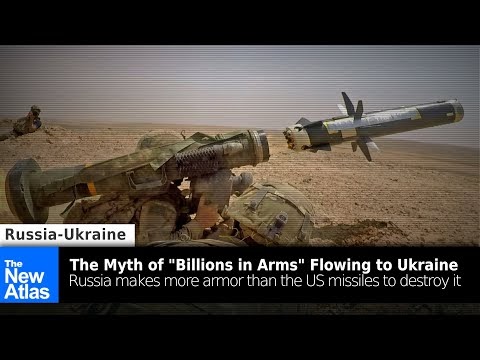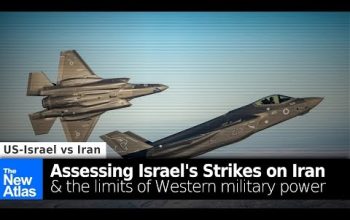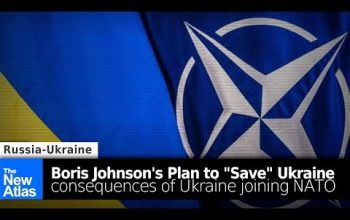June 13, 2024 (NEO – Brian Berletic) – In a June 8, 2024, Bloomberg article titled, “Putin Is Running Out of Time to Achieve Breakthrough in Ukraine,” an optimistic prognosis was made regarding the ongoing conflict in Ukraine in favor of Kiev.
The article claims that Russia has made “limited progress” along the line of contact, including along the newly-opened front in Kharkov and that as “billions in arms start flowing” into Ukraine, Ukrainian forces will be given the opportunity to “counter-attack.”
The “billions in arms” Bloomberg cites refers to the renewed flow of US military assistance after months of delays in passing funding in the US Congress. However, recalling the flagging impact of US arms transfers to Ukraine even before the funding delays, and a closer look at the actual quantities associated with these packages versus Russian military production, tells an entirely different story.
Bloomberg claims that the renewed flow of US arms is eroding Russia’s military advantage. However, this is simply not true.
Artillery Shells
The most recent US arms package featured, among other items, badly needed 155mm artillery shells and anti-tank weapons including the vaunted Javelin missile. Missing from the Pentagon’s public press release, were the quantities these weapons and munitions were being sent in.
It is well-known that US and European artillery shell production falls short of Russia’s by several times. A May 2024 Business Insider article puts the number of Russian shells produced this year at 4.5 million, while the US and Europe combined amount to only 1.3 million.
The prospect of Western shell production drastically increasing to match or even exceed Russian production numbers is unrealistic, according to a June 7, 2024 Bloomberg article titled, “America’s War Machine Can’t Make Basic Artillery Fast Enough.”
In the Bloomberg piece, various factors are mentioned ranging from limited material inputs, a lack of trained human resources, the need to vastly expand the physical production sites producing both the shells themselves and their various individual components, as well as the need to consistently procure funding to expand each of these factors. All of this takes time.
The article claims that by 2025, the US should be producing up to 68,000 155mm artillery shells a month. Even if Europe was able to match these production numbers, it would represent only two-thirds of Ukraine’s monthly requirements to achieve its 6,000 round daily rate of fire, which still falls far short of Russia’s daily rate of fire, placing Ukraine at a disadvantage.
Artillery shell production is relatively straightforward compared to more advanced weapons Ukraine also desperately requires. This includes anti-armor weapons like the Javelin missile.
Javelin Anti-Tank Missiles
Once hailed as a “game changer” by the collective Western media, the Javelin is now rarely mentioned either in headlines or even buried deep within articles. The missiles were passed over to Ukraine by the thousands during the initial phases of the Russian Special Military Operation (SMO), up to 7,000 or about one-third of the US’ total inventory according to the US government and arms industry-funded Center for Strategic and International Studies (CSIS) in late 2022.
Since then, Lockheed Martin, which produces the Javelin missile, claims to have expanded production by up to 15{ebf8267f808eac43d24742043db51eeeb004db6334271e1bb6fe8c21c7925753} in a 2024 release, producing up to 2,400 missiles per year or about 200 per month.
2,400 missiles are not being sent entirely to Ukraine each year. The missiles and less numerous command launch units (CLU) that fire them are required by the US, other NATO members, and other Lockheed customers around the globe. But let’s assume for a moment all 2,400 missiles are sent to Ukraine each year, and because US stockpiles are at critical levels, let’s assume Ukraine is sent Javelins drawn from this monthly production.
Does this mean that each month, 200 Russian tanks will be damaged or destroyed, adding up to 2,400 a year? No. According to the US Army’s own studies, even trained US soldiers have a 19{ebf8267f808eac43d24742043db51eeeb004db6334271e1bb6fe8c21c7925753} hit rate while utilizing Javelin, TOW, and AT-4 systems, all of which the US has sent to Ukraine throughout the SMO.
This means that even if Ukraine was receiving 200 missiles a month and firing them at Russian armored vehicles, they would be scoring only about 38 hits a month. Out of those 38 hits, fewer still would result in significant damage or complete destruction.
Comparing these overly optimistic numbers with Russian tank and other armored vehicle production puts this into better context.
According to a March 2024 CNN article discussing Russian military production, it admits Russia is producing up to 125 tanks a month. Other Western sources claim Russia also produces up to 250 other armored vehicles per month, for a total of 375 armored vehicles a month.
Compare that with the 38 hits Ukraine would be able to inflict even if the US sent every single Javelin produced straight to Ukraine each month. Russia is producing far more armored vehicles than the US is producing Javelin missiles to destroy them. The story is the same for other anti-armor weapon systems produced across the West (e.g. 1,000 TOW missiles produced per year), all of which face depleted stockpiles and low monthly production rates.
Considering that the number of Javelin missiles and other ordnance sent to Ukraine will be far less in reality than total monthly production, we begin to see the true measure of US (and European) military assistance and how the “billions in arms” now flowing to Ukraine do not represent a significant change in Ukraine’s ability to slow, let alone stop Russian forces as they continue mounting pressure not only along the existing front, but opening entirely new fronts, creating a wider strategic dilemma for Ukraine, stretching an already insufficient amount of manpower, equipment, and ammunition even further.
Empty Rhetoric
Despite Bloomberg discounting its “Putin is Running Out of Time” article with its “America’s War Machine Can’t Make Basic Artillery Fast Enough” article, it and other Western publications’ attempts to convince audiences that the tide is about to shift in Ukraine’s favor is a repeat of this same empty rhetoric used to sell Ukraine’s 2023 “counteroffensive” as poised to shift the conflict.
In reality, the 2023 Ukrainian military operation was soundly defeated by Russian forces who not only decimated Ukraine’s manpower, equipment, and ammunition stocks, but managed to bolster its own numbers and capabilities in the process.
Ukrainian attempts to claw back territory it has recently lost in Kharkov will lead to the same fruitless conclusion its 2022 and 2023 offensives did, a questionable chance of actually taking the territory for a guaranteed severe cost in irreplaceable trained manpower and equipment.
Today’s headlines across the West portending the tide changing in the fighting across Ukraine represent a now familiar cycle of encouraging Ukraine to fight on in what is otherwise an unwinnable conflict inflicting an immense and indelible cost on Ukraine in terms of territory, human lives, and economic prospects well into the future.
But as has been pointed out many times before, feeding Ukraine into an unwinnable proxy war had been a US objective articulated as early as 2019 in RAND Corporation’s paper, “Extending Russia,” which stated:
Expanding U.S. assistance to Ukraine, including lethal military assistance, would likely increase the costs to Russia, in both blood and treasure, of holding the Donbass region. More Russian aid to the separatists and an additional Russian troop presence would likely be required, leading to larger expenditures, equipment losses, and Russian casualties. The latter could become quite controversial at home, as it did when the Soviets invaded Afghanistan.
But warned:
However, such a move might also come at a significant cost to Ukraine and to U.S. prestige and credibility. This could produce disproportionately large Ukrainian casualties, territorial losses, and refugee flows. It might even lead Ukraine into a disadvantageous peace.
Obviously, even in 2019, US policymakers realized Ukraine would not win a US-sponsored proxy war against Russia. The actual objective was to raise the cost of Russian victory high enough to undermine Russia’s economy, divide Russian society, and perhaps even eventually precipitate a Soviet Union-style collapse. While RAND’s predictions of Ukraine’s destruction amid such a proxy war have clearly come to pass, the supposed “benefits” of this policy have yet to avail themselves and do not appear even plausible at this juncture.
Thus, Western rhetoric about Ukraine’s soon-to-be good fortune is not based on genuine analysis of the ongoing conflict, but is instead a point of propaganda aimed at encouraging Ukraine to fight on despite all actual analysis warning of the disaster awaiting in doing so.
Only time will tell just how far this process plays out to where the US and its partners are no longer pushing Ukraine onto the battlefield and are instead taking to the negotiation table. In the meantime, the “billions in arms” flowing into Ukraine will continue to have the same impact they’ve had all along, ensuring “disproportionately large Ukrainian casualties, territorial losses, and refugee flows,” ultimately leading Ukraine “into a disadvantageous peace.”
Brian Berletic is a Bangkok-based geopolitical researcher and writer, especially for the online magazine “New Eastern Outlook”.



